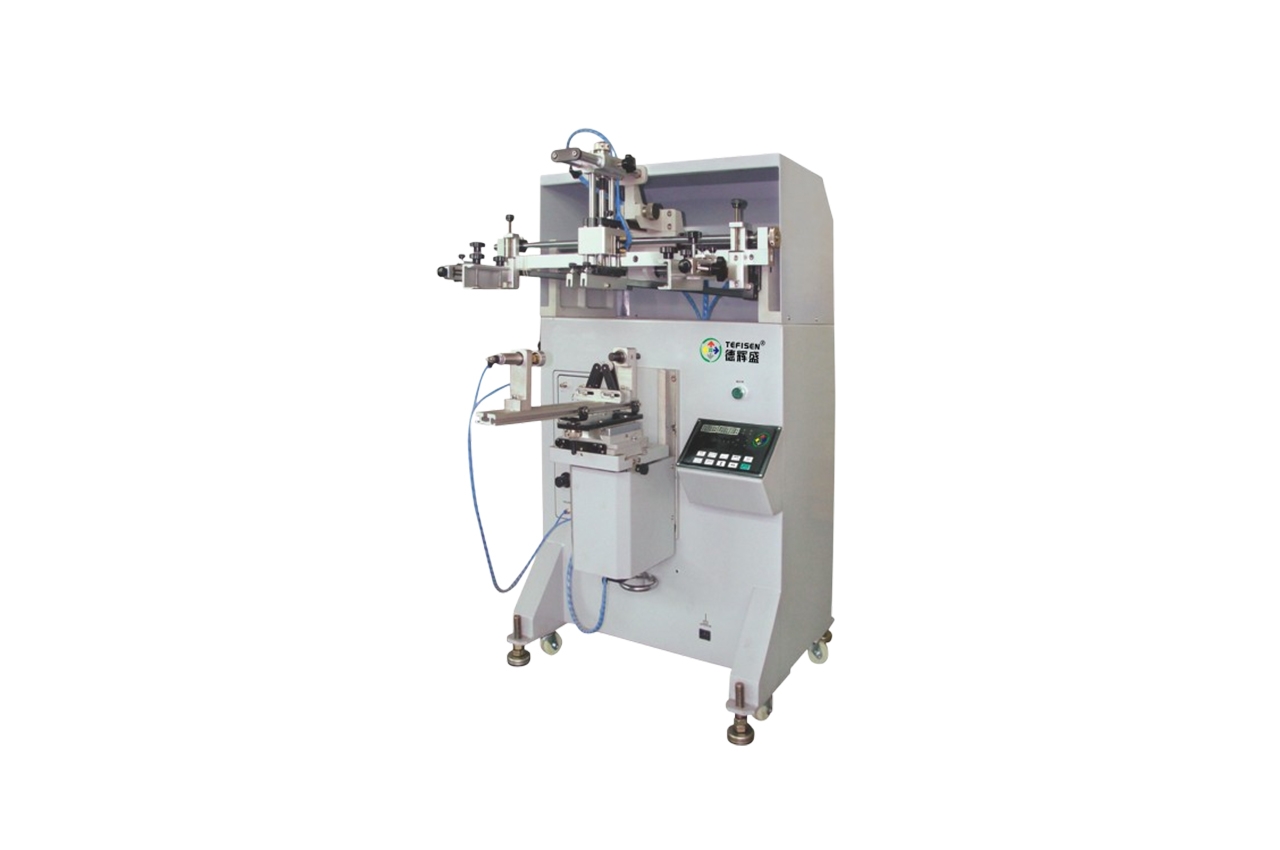TFS-400E Curved Surface Screen Printing Machine
Tefisen's TFS-400E Curved Surface Screen Printing Machine is equipped with a stable microcomputer controller and a bright blue display, featuring clear LCD status indication. It utilizes high-quality sensors and allows for independent control of printing and ink return speeds. The machine is easy to operate and maintain, with a maximum printing area of Ø110mm X 200mm (L) and 300mm (L) X 200mm (W). It is suitable for cylindrical, elliptical cylindrical, and flat surface printing.
Detailed Introduction
TFS-400E Curved Surface Screen Printing Machine, capable of printing on buckets, balls, and other round products.
Detailed Introduction
1. Product Features:
• Stable and reliable microcomputer controller
• Bright and clear blue display
• Clear LCD status display
• Comprehensive alarm system
• High-quality Autonics sensors
• Unique machine alarm system
• Convenient and simple foot pedal switch control
• Pneumatic components from international brands such as SMC, FESTO, BOSCH
• Advanced air filtration device
• Lightweight yet sturdy alloy die-cast components
• Wear-resistant imported shaft rods and bushings
• Independent printing and ink return speed control
• Simple operation
• Easy maintenance
2. Specifications:
|
Machine Model |
Max. Printing Area (mm) |
Printing Speed Printing |
Shapes |
|
TFS-300E |
Ø65, 200 (L) |
< 1800 Pcs/Hr |
Cylindrical, Elliptical Cylindrical |
|
TFS-400E |
Ø110, 200 (L) |
< 1500 Pcs/Hr |
Cylindrical, Elliptical Cylindrical |
|
TFS-400E |
300 (L) X 200 (W) |
< 1500 Pcs/Hr |
Flat Surface |
|
TFS-600E |
Ø175, 200 (L) |
< 1200 Pcs/Hr |
Cylindrical, Elliptical Cylindrical |
|
TFS-1200E |
Ø350, 300 (L) |
< 1000 Pcs/Hr |
Cylindrical, Elliptical Cylindrical |
3. Precautions:
• Before starting the machine, check the power cable for any damage to the outer sheath. Exposed wires can cause electric shock or other serious accidents. If the cable is damaged, do not • connect the machine to the power source. Replace it with a new cable, ensure normal conditions, and then power on.
• When replacing parts or electrical components, turn off the main power and unplug the power cord. Only after replacement is complete should the power plug be reinserted.
• During machine adjustment, do not casually reach into the machine or touch moving parts to prevent personal injury.
• Before each startup, verify the power voltage and compressed air pressure before turning on the machine.
• Do not insert rods or other objects into the machine cabinet, or use improper methods such as hammers or crowbars to knock, pry, or force any part of the machine, as this may deform or damage mechanical components.
• Keep the inside and outside of the machine cabinet clean. If soiled with oil, use appropriate cleaners. Avoid strong solvents to prevent machine damage.
• The machine uses 220V AC power. Ensure it is never connected to 380V AC, as this will cause machine damage or personal injury.
• After the main power switch is turned on, do not casually open the machine cabinet door for inspection or maintenance, as this may cause personal injury.
• Do not allow corrosive liquids to contact the control panel to prevent damage.
• Never modify the machine's electrical circuit privately, as this may cause serious accidents.
4. How to Choose the Screen Frame Size?
• Screen printing frames are made of aluminum or wood. The screen mesh is attached to the frame, and the frame size is determined based on the size of the pattern to be printed. Typically, the distance from the left and right ends of the pattern (along the squeegee travel direction) should be 60mm-100mm to allow space for ink placement. This ensures sufficient elasticity of the screen during squeegee operation. The frame must not be twisted. The distance from the inner front and rear edges of the frame to the pattern is generally about 20mm. There should be a gap of approximately 0.5mm-2mm between the screen mesh and the substrate, depending on the printing area and screen tension. If there is no gap or the screen is too close to the substrate, the screen may not snap back promptly after the squeegee passes, causing the substrate to separate from the screen only after printing is complete. This can lead to fuzzy lines (feathering) or even blurred/bleeded patterns. Additionally, the mesh count of the screen used is crucial for print quality and must be selected according to the pattern requirements. See diagram below.
Corresponding Screen Frame Sizes for the Equipment:
|
Machine Model
|
Size (L * W) |
|
TFS-300E |
< 380 x 350 mm |
|
TFS-400E |
< 600 x 400 mm |
|
TFS-600E |
< 800 x 400 mm |
|
TFS-1200E |
< 1350 x 450 mm |
5. How to Choose the Squeegee?
• Squeegees are mainly of two types: Square Blade and Beveled (Sharp) Blade. When printing on flat surfaces or harder substrates, the square blade is preferable because its edge provides stronger force during operation, resulting in better line definition in the printed pattern. However, if the substrate surface has irregularities, the printed pattern may not be ideal. The tip of the beveled blade is relatively softer and sweeps the ink across the screen during operation (whereas the square blade scrapes/pushes the ink). Therefore, the beveled blade can produce good prints even on slightly uneven surfaces. If a deeper color, thicker ink deposit, or greater abrasion resistance is required for the pattern, using a beveled squeegee is generally preferable.
6. How to Choose Screen Printing Ink?
• Ink should be mixed to an appropriate viscosity. If the ink viscosity is too high, the ink lacks fluidity, clogs the mesh easily, and makes printing difficult. If the ink is too thin, the printed pattern may have insufficient color depth or poor line definition (feathering). Therefore, ink mixing is an important task. Do not place an excessive amount of ink on the screen. If there is too much ink, it may flow back and seep through the mesh of the already printed areas before the squeegee completes the print stroke. During the ink return pass, this area will have too much ink, causing uneven ink density in the second print. If there is insufficient ink on the screen, the return pass may not fully cover the pattern, leading to mesh clogging and uneven ink density due to lack of ink. Therefore, frequently monitor the ink viscosity on the screen. There are many types of inks; it is essential to use an ink compatible with the characteristics of the substrate to achieve the best results. If mesh clogging occurs during printing, use thinners or screen wash to resolve it. Absolutely avoid using thinner for cleaning, as it can quickly damage the stencil emulsion on the screen, rendering the screen useless.
Product Parameters
• Model: TFS-400E
• Maximum Printing Area (mm): φ110 mm * 200mm (L)
• Maximum Substrate Taper: 15°
• Maximum Printing Speed (PCS/Hr): 1500
• Power/Air Pressure: 110/220V, 50/60Hz, 50W, 6Bar



